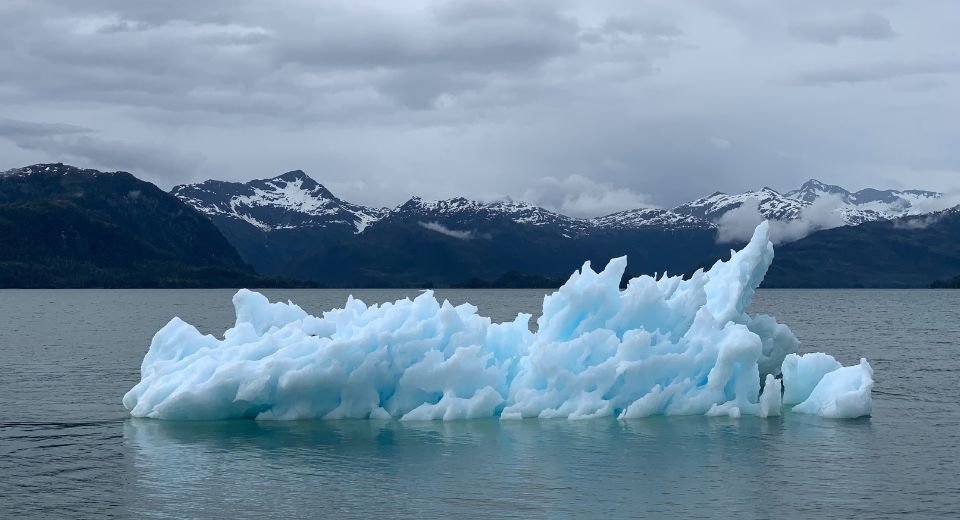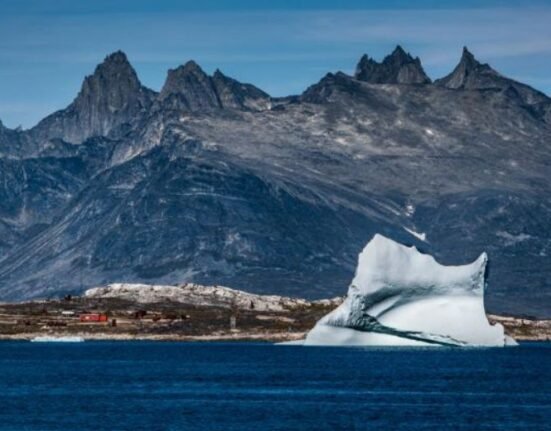HQ Team
April 22, 2023: Record-breaking heat caused by greenhouse gases, ocean heat, and ocean acidification have resulted in glacial melts, a rise in sea levels, and human displacement last year, according to a WMO report.
The years between 2015 and 2022 were the eighth warmest on record despite the cooling impact of a La Niña event for the past three years, the World Meteorological Organization’s ‘State of the Global Climate 2022’ stated.
Melting of glaciers and sea level rise — which reached record levels in 2022 — will continue for up to thousands of years.
Throughout the last year, hazardous climate and weather-related events drove new population displacement and worsened conditions for many of the 95 million people already living in displacement at the beginning of the year, according to the report.
As of 2021, 2.3 billion people faced food insecurity, of which 924 million people faced severe food insecurity. The projections estimated 767.9 million people are facing undernourishment in 2021 — 9.8% of the global population. Half of these are in Asia and one-third are in Africa.
Heatwaves in the 2022 pre-monsoon season in India and Pakistan caused a decline in crop yields.
Ukraine war
The heat waves, combined with the banning of wheat exports and restrictions on rice exports in India after the start of the conflict in Ukraine, threatened the availability, access, and stability of staple foods within global food markets.
It posed high risks to nations already affected by shortages of staple foods.
In Somalia, almost 1.2 million people became internally displaced by the impacts of drought on pastoral and farming livelihoods and hunger during the year, of whom more than 60 000 people crossed into Ethiopia and Kenya during the same period.
Somalia was hosting almost 35 000 refugees and asylum seekers in drought-affected areas. A further 512 000 internal displacements associated with drought were recorded in Ethiopia.
The global mean temperature in 2022 was 1.15 degree Celsius above the 1850-1900 average. The years 2015 to 2022 were the eight warmest in the instrumental record back to 1850.
Last year was the 5th or 6th warmest year. This was despite three consecutive years of a cooling La Niña – such a “triple-dip” La Niña has happened only three times in the past 50 years.
Methane levels
The concentration of carbon dioxide, methane, and nitrous oxide – reached record observed highs in 2021, the latest year for which consolidated global values were available, 1984-2021.
The annual increase in methane concentration from 2020 to 2021 was the highest on record. Real-time data from specific locations show levels of the three greenhouse gases continued to increase in 2022.
Reference glaciers, for which WMO had long-term observations, experienced an average thickness change of more than 1.3 meters between October 2021 and October 2022.
“This loss is much larger than the average of the last decade. Six of the ten most negative mass balance years on record (1950-2022) occurred since 2015. The cumulative thickness loss since 1970 amounts to almost 30 meters,” according to the report.
The European Alps smashed records for glacier melt due to a combination of little winter snow, an intrusion of Saharan dust in March 2022, and heatwaves between May and early September.
In Switzerland, 6% of the glacier ice volume was lost between 2021 and 2022 – and one-third between 2001 and 2022. For the first time in history, no snow survived the summer melt season even at the very highest measurement sites and thus no accumulation of fresh ice occurred.
69-year old record
A Swiss weather balloon recorded 0 C at a height of 5,184 meters on 25 July, the highest recorded zero-degree line in the 69-year record and only the second time that the height of the zero-degree line had exceeded 5,000 meters (16,404 feet). New record temperatures were reported from the summit of Mont Blanc.
Globally, the glaciers lost more than 6000 gigaton of ice over the period 1993-2019. This represents an equivalent water volume of 75 lakes the size of Lac Leman (also known as Lake Geneva), the largest lake in Western Europe.
The Greenland Ice Sheet ended with a negative total mass balance for the 26th year in a row.
Sea ice in Antarctica dropped to 1.92 million km2 on February 25, 2022, the lowest level on record and almost 1 million km2 below the long-term (1991-2020) mean.
For the rest of the year, it continued below average, with record lows in June and July.
Arctic sea ice in September at the end of the summer melt tied to the 11th lowest monthly minimum ice extent in the satellite record.
Sea-level rise
Ocean heat content reached a new observed record high in 2022.
Around 90% of the energy trapped in the climate system by greenhouse gases goes into the ocean, somewhat ameliorating even higher temperature increases but posing risks to marine ecosystems.
Ocean warming rates have been particularly high in the past two decades. Despite continuing La Niña conditions, 58% of the ocean surface experienced at least one marine heatwave during 2022.
The rate of global mean sea level rise has doubled between the first decade of the satellite record. Between 2005 and 2019, total land ice loss from glaciers, Greenland, and Antarctica contributed 36% to the global mean sea level rise, and ocean warming (through thermal expansion) contributed 55%. Variations in land, water storage contributed less than 10%.
Carbon dioxide reacts with seawater resulting in a decrease in pH referred to as ‘ocean acidification’. Ocean acidification threatens organisms and ecosystem services.
The Intergovernmental Panel on Climate Change’s Sixth Assessment Report concluded that “there is very high confidence that open ocean surface pH is now the lowest it has been for at least 26 [thousand years] and current rates of pH change are unprecedented since at least that time.
In East Africa rainfall has been below average in five consecutive wet seasons, the longest such sequence in 40 years.
Food insecurity
As of January 2023, it was estimated that over 20 million people faced acute food insecurity across the region, under the effects of the drought and other shocks.
During July and August, record-breaking rain led to extensive flooding in Pakistan. There were over 1 700 deaths, and 33 million people were affected, while almost 8 million people were displaced.
Total damage and economic losses were assessed at US$ 30 billion. July (181% above normal) and August (243% above normal) were each the wettest on record nationally.
Heat waves affected Europe during the summer. In some areas, extreme heat was coupled with exceptionally dry conditions. Excess deaths associated with the heat in Europe exceeded 15 000 in total across Spain, Germany, the UK, France, and Portugal.
China had its most extensive and long-lasting heatwave since national records began, extending from mid-June to the end of August and resulting in the hottest summer on record by a margin of more than 0.5 °C. It was also the second-driest summer on record.
The flooding in Pakistan affected some 33 million people, including about 800,000 Afghan refugees hosted in the affected districts. By October, around 8 million people have been internally displaced by the floods with some 585 000 sheltering in relief sites.
Cherry blossoms
Climate change has important consequences for ecosystems and the environment. A recent assessment focusing on the unique high-elevation area around the Tibetan Plateau, the largest storehouse of snow and ice outside the Arctic and Antarctic, found that global warming is causing the temperate zone to expand.
Climate change is also affecting recurring events in nature, such as when trees blossom, or birds migrate. The flowering of cherry blossoms in Japan has been documented since AD 801 and has shifted to earlier dates since the late nineteenth century due to the effects of climate change and urban development.
In 2021, the full flowering date was March 26, the earliest recorded in over 1200 years. In 2022, the flowering date was April 1.








